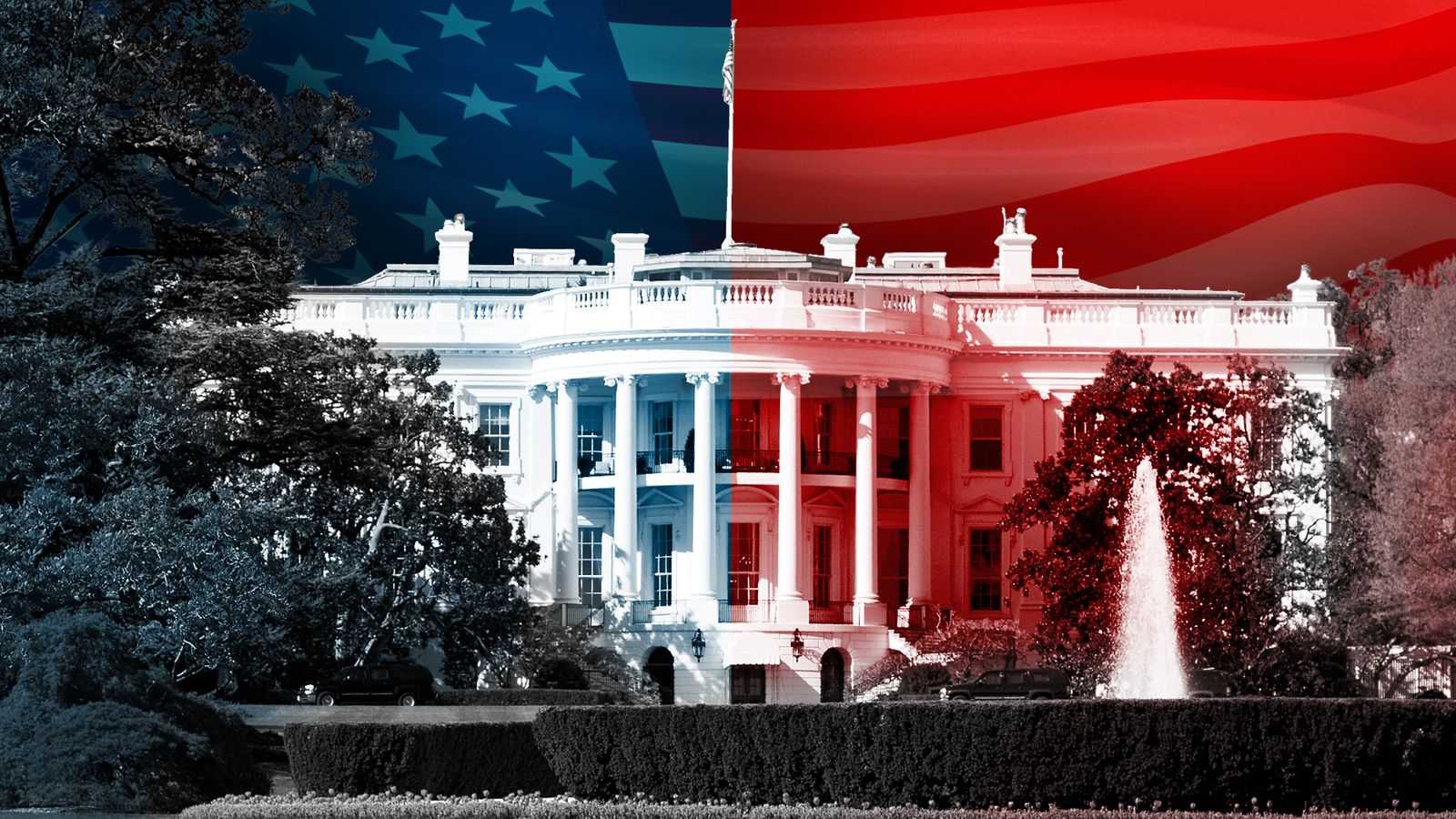From primaries to caucuses via the Electoral College, the US election system is full of terminology that can feel unfamiliar when it crops up every four years.
Here, we break down how the US election system works and what all those words mean.
First – what are the basics of the US elections?
On Tuesday 5 November 2024, Americans will go to the polls for the country’s presidential election.
But it is a long run-up to that point, including the primaries and caucuses by which the presidential candidates will be chosen.
The winner of the presidential election will take office in January 2025 for a four-year term.
How does the Electoral College system work?
Americans don’t actually vote directly for who they want to be president and vice president.
Instead, they vote for “electors” – members of the Electoral College – who back their choice of candidate for those roles.
Each state has a number of electors depending on its population.
California, which has a population of nearly 40 million, has 55 votes in the Electoral College – while North Dakota, home to about 762,000 people, has just three votes.
There are a total of 538 electors in total – 435 representatives from Congress, 100 Senators and three additional voters from the District of Columbia.
Most states operate a winner-takes-all system, so if a candidate wins the most votes in a state, they get all the Electoral College votes.
Just two states, Maine and Nebraska, use a proportional system, dividing their Electoral College votes according to how many votes each candidate receives.
The first candidate to 270 Electoral College votes wins the presidency.
If no candidate gets an absolute majority then the House of Representatives elects the president.
What does that mean for the popular vote?
Because of the way the Electoral College system works, the candidate who is most popular with voters may not wind up being elected president.
This happened in 2016, when Hillary Clinton gained almost three million more votes than Donald Trump – but he won the presidency with 304 Electoral College votes to her 227.
In 2000, George W Bush won with 271 Electoral College votes, but Democrat candidate Al Gore won the popular vote by more than half a million.
How is the vice president elected?
The vice president is also elected through the Electoral College system.
Each elector will cast one vote for president and another for vice president.
Presidential candidates choose who will be their “running mate” in line for vice president.
President Joe Biden is committed to keeping Kamala Harris, the first woman vice president and vice president of colour, on his ticket for re-election.
Frontrunner for the Republican nomination Donald Trump has name-dropped a number of people when asked about potential running mates, saying he would not make a decision for a “little while”.
Read more: Who could be the next vice president of the US?
When is the winner announced?
A projected winner is normally announced on election night, but the actual Electoral College vote happens in December when the electors meet in their states.
What are swing states and how important are they?
Swing states, also known as battleground or toss-up states, hold disproportionate sway in presidential elections.
As the name indicates, these are the states that switch between voting Republican and Democrat, because their population is fairly evenly split in support of the two parties.
Millions of dollars are poured into campaigning in swing states as winning the additional college votes can be crucial.
In 2024, the critical states are likely to include Arizona, Georgia, Michigan, Nevada, Pennsylvania and Wisconsin. In a November poll, Mr Trump was ahead in all but Wisconsin.
Read more:
What are caucuses and why is the first in Iowa so important?
What is Super Tuesday? Why one day of the US election matters so much
What are primary elections?
Primaries are like mini-elections to select candidates in the two main parties for the general election.
They are generally conducted in polling places like other elections, or sometimes by post.
Although voters cast ballots for their preferred presidential candidates, it is the delegates to the national party conventions who ultimately select the presidential nominees for each major party.
Candidates are awarded delegates in most states by winning the primary elections and caucuses.
To get the Republican nomination, a candidate needs to get at least 1,215 delegates. For the Democratic nomination, it’s 1,968 delegates.
The Republican National Convention is in July and the Democratic National Convention is in August.
While Joe Biden and Donald Trump are already clear frontrunners, the conventions will be when delegates officially vote for their preferred candidates.
What is a caucus?
Unlike primaries, caucuses must be attended in person.
Primaries are run by the state whereas caucuses are organised by the parties themselves.
Please use Chrome browser for a more accessible video player
Caucuses take place at precinct, district, and state level in places such as schools, churches, and community centres.
Campaign representatives make speeches on behalf of their candidates and caucus-goers vote then and there, with the votes tallied in a matter of hours.
Primaries and caucuses can be open – with anyone allowed to take part – or closed, meaning only registered party members can vote.
What is Super Tuesday?
Super Tuesday is the biggest day of voting in the US outside of the November election.
It is the day when the most US states choose who they think should be their candidates for president.
This year, Super Tuesday saw fifteen states plus the US territory of American Samoa cast their votes for Republican and Democratic candidates.
Please use Chrome browser for a more accessible video player
What are Americans voting for besides president?
Voters will also elect new members of Congress, the legislative branch of the US government which is made up of two parts: the House of Representatives and the Senate.
Each state has two Senators and at least one Representative.
All 435 seats in the House of Representatives are up for election, while 33 Senate seats will also be decided in November.









